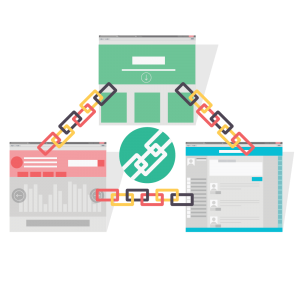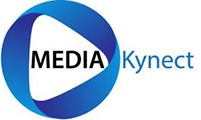If you’re looking for a way to stay ahead of your competitors, SEO is the answer. Search engine optimisation is the process of modifying and designing content on your site so that it’s better at ranking in search engines like Google or Bing.
This article will discuss some of the latest trends in SEO and how you can incorporate them into your marketing strategy!
Contents
Optimising for Search Intent
Google is constantly changing and evolving, and the latest change is the introduction of search intent.
Search intent refers to the reason why someone is searching for a particular keyword or phrase. Google now takes this into account when ranking websites, so it’s more important than ever to understand what your audience wants.
Search intent can be split up into three categories – commercial, informational or navigational.
 Commercial intent refers to people who are specifically looking for a product or service. For example, if someone types “buy shoes online” into Google, they want to buy shoes – not information about shoes. These types of keywords have high commercial intent and can be considered as a lead generation opportunity.
Commercial intent refers to people who are specifically looking for a product or service. For example, if someone types “buy shoes online” into Google, they want to buy shoes – not information about shoes. These types of keywords have high commercial intent and can be considered as a lead generation opportunity.
Navigational intent refers to people who are specifically looking for a website – the person has already decided where they want to go and will simply search Google until they find it.
For example, if someone types in “BBC” into Google, they are looking for the BBC website. This type of keyword has low commercial intent, but can still be quite valuable because it shows that your site is being recognised by Google and trusted by users – which is what you want!
Informational intent refers to people who are searching for general information on a topic. For example, if someone types in “How to tie a Windsor knot” into Google, they aren’t looking for a particular website – they just want information on how to tie a Windsor knot. Informational keywords have low commercial and navigational intent, but can still be valuable because you can target them with content marketing strategies.
It’s important to understand which type of intent your audience is using to ensure that you’re not wasting time and money on content and keywords with the wrong intent.
Optimising for Passage Indexing
Google passage indexing is an automated feature that pulls sections from pages on your site and indexes them. This means that Google can recognise important sections of a page without fully reading it – which makes sense considering the average person has an attention span of eight seconds!
Passage indexing can be really helpful if you have long pages with lots of content, as it saves time for users who want specific information on a topic.
You can improve passage indexing by using heading tags (H-tags) to mark important sections of your content. Google will then use these headings to identify the most important parts of your page and include them in its search results.
It’s also important to make sure that your content is high quality and relevant, as Google will not include passages from pages with low-quality and/or irrelevant information on its search results.
Use passage indexing to your advantage by marking important parts of your content like headings, creating high-quality and relevant content for users – this will help you rank higher in search engine result pages!
Optimising for MUM
Natural Language Processing Model MUM has been said to 1000x more powerful than BERT (Bidirectional Encoder Representations from Transformers). Google’s Machine Understanding of Natural Language allows it to better understand the context of written content.
 What this means is MUM will combine different aspects of the search query and try to understand the sentiments, context, entities, and most importantly the intent of the user to provide answers that are really close to what the user expected.
What this means is MUM will combine different aspects of the search query and try to understand the sentiments, context, entities, and most importantly the intent of the user to provide answers that are really close to what the user expected.
For example, if someone types “I like coffee” into Google it will recognise that “coffee” refers to the drink and not the bean.
MUM can also identify synonyms, so if someone types “I like caffeine” into Google, it will recognise that “caffeine” is a synonym for coffee. This helps to improve search results by giving users more relevant information based on their query.
You can improve your website’s MUM score by using synonyms and semantically related words in your content, as well as ensuring that your content is high quality and relevant.
MUM is a powerful tool that can help you improve your website’s search engine ranking – use it to your advantage!
Optimising for SMITH
SMITH (Siamese Multi-depth Transformer-based Hierarchical Neural) Network) is a machine learning model that allows Google to better understand the intents and purposes of longer, more in-depth pages with a high frequency of content.
SMITH takes into account the content on your page, as well as its context (what other pages are linked to it). By analysing this data, SMITH can determine how relevant certain keywords are and whether they should be weighted higher in search results.
To optimise your content for SMITH, you need to make sure that it is well written and keyword-rich. Use a variety of relevant keywords throughout your page, and make sure that they are included in the title, meta description and H tags.
Improving Your E-A-T
Expertise, authoritativeness, and trustworthiness (E-A-T) are three key factors that Google takes into account when ranking websites.
To improve your E-A-T, you need to make sure that your website is authoritative and trustworthy. Write high-quality content, back up your claims with evidence, and be transparent about who you are and what you do.
You can also improve your E-A-T by being active on social media and networking with other bloggers/website owners in your industry. This will help you build trust and authority with your audience.
E-A-T is an important ranking factor that you need to take into account if you want to improve your website’s search engine ranking.
Optimising for Featured Snippets
Google Featured Snippets are one of the most important parts of SEO, and they’re becoming more popular every day!
 Featured snippets appear when someone searches for a certain query – these can be either images or text results. The contents of your page will not only need to optimised to rank on page one, but also have enough information to be featured as a snippet.
Featured snippets appear when someone searches for a certain query – these can be either images or text results. The contents of your page will not only need to optimised to rank on page one, but also have enough information to be featured as a snippet.
To optimise your content for Featured Snippets, you need to make sure that it is well written and easy to understand. Use natural language (avoid jargon or complex terminology) and break your content down into small, manageable chunks. This will make it easier for Google to understand what your page is about.
Optimising Your Core Web Vitals
Core Web Vitals are a way to measure the user experience of a page. The three Core Web Vitals are:
- Largest Contentful Paint (LCP)
- First Input Delay (FID)
- Cumulative Layout Shift (CLS)
Largest Contentful Paint (LCP) is the largest-sized text or image on a single web page.
A user’s first interaction with your website is known as the first input delay (FID). This includes anything from clicking on a link to filling out a form.
The cumulative layout shift (CLS) is a metric that indicates how much of your page’s content has been removed from view. This might be induced by, for example, content or advertisement loading.
Keeping an eye on these three metrics will help you determine whether your website is providing a good user experience or not.
HARO Link Building
HARO stands for Help a Reporter Out, and it’s one of the easiest ways to get high-quality backlinks. HARO is an online service that lets you connect with journalists looking for experts in various fields who can offer expert opinions on current events or trends.
 Once you sign up to HARO, every day there will be a list of reporters looking for interviewees on certain topics. You can see which journalists are accepting submissions and the deadline – if you’re interested in being interviewed, all you need to do is send them a message!
Once you sign up to HARO, every day there will be a list of reporters looking for interviewees on certain topics. You can see which journalists are accepting submissions and the deadline – if you’re interested in being interviewed, all you need to do is send them a message!
HARO will also include other opportunities to get free backlinks from reputable sources such as blogs or news outlets that want to interview you.
Targeting Long-tail Keywords
The first step to take is analysing what people are searching for on search engines. This can be done by looking at the most popular keywords used in your industry, as well as long tail keywords which have less traffic but more targeted results.
For example, if you were a niche blogger writing about fishing equipment, there would probably be lots of searches for items like “fishing reels” and “best fly rod”.
But if you looked closer into what your users want to see they might also type in something like “how often do I need to clean my fishing reel?”. If people are typing longer words onto Google it means their intent is more specific, so including these keywords into your content can help you rank as the competition is lower and your content will have incredible relevance.
Improve Your Mobile SEO
This is especially important for those of you who rely on your mobile phone to access the internet. Google recently changed their algorithm and now they’re giving websites that are optimised for smartphones a higher rank than those which aren’t!
If you want this change in trend to work in your favor, make sure all of your images upload correctly (make it as easy as possible for users wanting to find information), use fast loading speeds, and keep everything relevant by adapting content
specifically towards smartphone browsers. This means no more scrolling down endless pages filled with irrelevant text – make things concise yet informative so people can read what they need quickly and easily on their phones or tablets.
Increase Your High-Quality Backlinks
Backlinks are incoming links from other websites that point to your content. The higher the quality of these backlinks, the better it is for your SEO ranking!
Ways to get high-quality backlinks include guest blogging on reputable sites, being active on social media, and networking with other bloggers/website owners in your industry.
When another website links to your content, it’s seen as a vote of confidence and can help improve your ranking on search engines.
Create Video Content
 Videos are becoming more and more popular, which makes it easier for your website to stand out if you have videos on your page.
Videos are becoming more and more popular, which makes it easier for your website to stand out if you have videos on your page.
Many people prefer watching a video over reading an article. If you’re struggling to get the attention of potential readers, adding one or two videos to your site can be extremely effective! Just make sure that there is a good balance between text and video content – too much of either can be a turn-off.
Videos also have the bonus of being easy to share on social media, so they can help you reach a wider audience.
Make sure that your videos are high quality and provide valuable information. Don’t just post a video for the sake of it – make sure that it is relevant to your audience and provides them with some value.
Optimise for Voice Search
With the popularity of voice-activated assistants such as Google Assistant, Siri and Alexa, it’s important to start thinking about how you can optimise your website for voice search.
People are using these devices more and more to find information online, so if you’re not catering to this trend then you’re missing out!
Some ways to optimise your site for voice search include adding long-tail keywords into your content, making sure that all of your images are correctly labelled, and using FAQ pages on your site.
We Offer SEO Services Nationwide
- Manchester:https://mediakynect.co.uk/seo-manchester/
- Birmingham: https://mediakynect.co.uk/seo-birmingham/
- Leeds: https://mediakynect.co.uk/seo-leeds/
- Southampton: https://mediakynect.co.uk/seo-southampton/
- Sheffield: https://mediakynect.co.uk/seo-sheffield/
- Brighton: https://mediakynect.co.uk/seo-brighton/
- Leicester: https://mediakynect.co.uk/seo-leicester/
- Bournemouth: https://mediakynect.co.uk/seo-bournemouth/
- Cardiff: https://mediakynect.co.uk/seo-cardiff/
- Coventry: https://mediakynect.co.uk/seo-coventry/
Conclusion
These are just a few of the latest SEO trends that you should be aware of this year. By following these tips, you can help your website rank higher on search engines and reach a wider audience. Don’t forget to adapt your content to suit the needs of mobile users – they’re becoming an increasingly important demographic!
So there you have it – some great ways to stay ahead of the pack when it comes to SEO. Make sure you implement as many of these tips as possible and see how your ranking improves!

